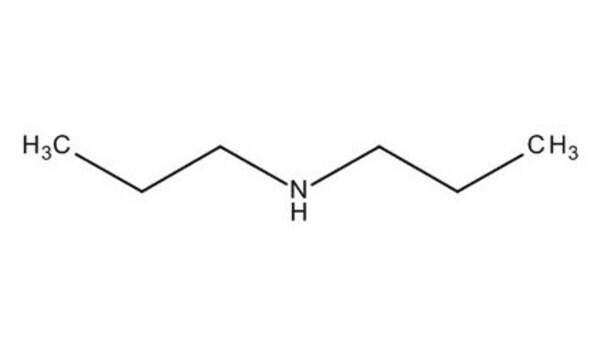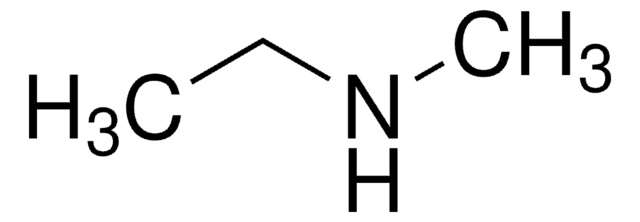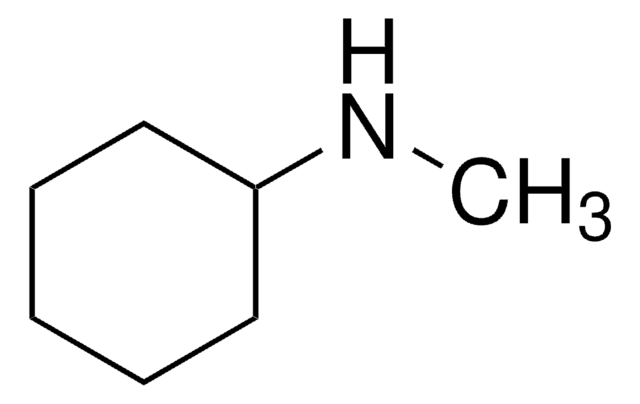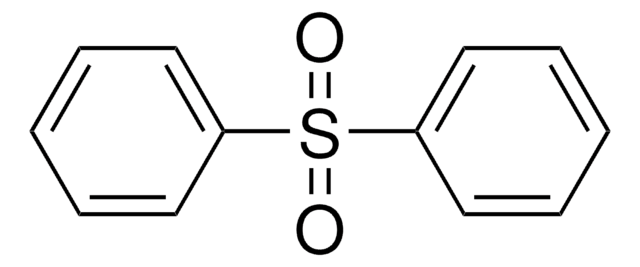D214752
Dipropylamine
99%
Synonyme(s) :
Di-n-propylamine, Dipropanamine, Dipropylamine (8CI), N,N-Di(n-propyl)amine, N,N-Dipropylamine, N-Propyl-1-propanamine, n-Dipropylamine
About This Item
Produits recommandés
Niveau de qualité
Essai
99%
Forme
liquid
Indice de réfraction
n20/D 1.4049 (lit.)
pb
105-110 °C (lit.)
Densité
0.738 g/mL at 25 °C (lit.)
Chaîne SMILES
CCCNCCC
InChI
1S/C6H15N/c1-3-5-7-6-4-2/h7H,3-6H2,1-2H3
Clé InChI
WEHWNAOGRSTTBQ-UHFFFAOYSA-N
Vous recherchez des produits similaires ? Visite Guide de comparaison des produits
Description générale
Application
- Separation of hydrocarbons: Nitrogen-containing switchable solvents, including dipropylamine, are used for the separation of hydrocarbons and their derivatives, showcasing the compound′s versatility in solvent applications (Liu et al., 2020).
- Microextraction techniques: Dipropylamine-based dispersive micro-solid phase extraction combined with switchable hydrophilicity solvent is employed for enriching non-steroidal anti-inflammatory drugs from environmental water samples, demonstrating its utility in complex sample preparation (Di et al., 2020).
- Homogeneous liquid-liquid microextraction: A new pH assisted homogeneous liquid-liquid microextraction method utilizing dipropylamine as a solvent with switchable hydrophilicity was developed for the GC-MS determination of methamphetamine, highlighting its effectiveness in analytical chemistry applications (Shahvandi et al., 2018).
- Removal of contaminants: Research demonstrated the use of zeolite and powdered activated carbon in conjunction with dipropylamine for the simultaneous removal of ammonia and N-nitrosamine precursors from high ammonia water, underscoring its environmental application (Xue et al., 2018).
- Nanosized synthesis: Dipropylamine was used in a co-templating synthesis approach for the production of high-yield nanosized (Si)AlPO-41 using ethanol polarity equalization, illustrating its role in materials science (Majano et al., 2015).
Mention d'avertissement
Danger
Mentions de danger
Classification des risques
Acute Tox. 3 Dermal - Acute Tox. 3 Inhalation - Acute Tox. 4 Oral - Eye Dam. 1 - Flam. Liq. 2 - Skin Corr. 1A - STOT SE 3
Organes cibles
Respiratory system
Code de la classe de stockage
3 - Flammable liquids
Classe de danger pour l'eau (WGK)
WGK 1
Point d'éclair (°F)
44.6 °F - closed cup
Point d'éclair (°C)
7 °C - closed cup
Équipement de protection individuelle
Faceshields, Gloves, Goggles, type ABEK (EN14387) respirator filter
Faites votre choix parmi les versions les plus récentes :
Déjà en possession de ce produit ?
Retrouvez la documentation relative aux produits que vous avez récemment achetés dans la Bibliothèque de documents.
Les clients ont également consulté
Notre équipe de scientifiques dispose d'une expérience dans tous les secteurs de la recherche, notamment en sciences de la vie, science des matériaux, synthèse chimique, chromatographie, analyse et dans de nombreux autres domaines..
Contacter notre Service technique












